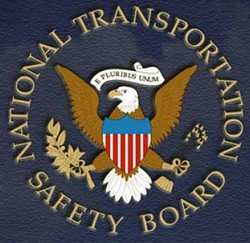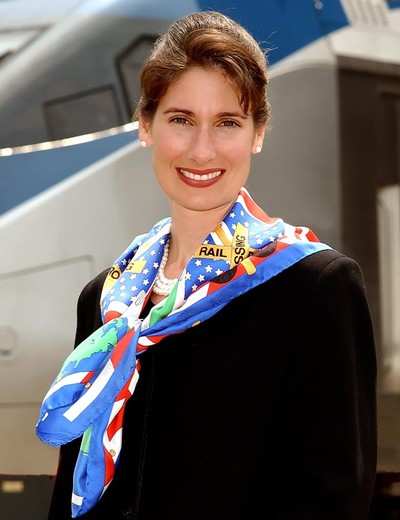Thu, Sep 17, 2009
ATC Is Again Becoming A Focus Of The Investigation
 NTSB Chair Debora Hersman told the
U.S. House Committee on Transportation and Infrastructure Aviation
Subcommittee that the pilot of a Piper PA-32 which collided with a
sightseeing helicopter over the Hudson River incorrectly read back
a radio frequency, and was not corrected by air traffic controllers
at Teterboro (TEB).
NTSB Chair Debora Hersman told the
U.S. House Committee on Transportation and Infrastructure Aviation
Subcommittee that the pilot of a Piper PA-32 which collided with a
sightseeing helicopter over the Hudson River incorrectly read back
a radio frequency, and was not corrected by air traffic controllers
at Teterboro (TEB).
Hersman's statement came during her prepared remarks to the
subcommittee Wednesday. "The pilot read back to the controller an
incorrect frequency; ATC recordings do not indicate that the
incorrect read-back was heard or corrected by any air traffic
controller," Hersman said in her statement. "A preliminary review
of recorded ATC communications showed that the pilot did not
contact EWR (Newark Liberty International Airport) before the
accident. We are reviewing ATC tapes for other frequencies to see
if the pilot was attempting to contact EWR on the incorrect
frequency. In any case, about 11:53:17, approximately the time of
the accident, the TEB local controller contacted the EWR controller
to ask about the airplane and was told that the pilot had not
called. There are no known additional ATC contacts with the
airplane."
But Hersman also indicated that the Hudson corridor is very busy
airspace, and while there have been a number of near-collisions in
the region, pilots generally transit the area safely. "Recent FAA
traffic estimates indicate that over 200 aircraft a day pass
through the Hudson River class B exclusion area," she said. "The
Hudson River class B exclusion area and associated transition
procedures have been in use for more than 30 years, and until the
accident, the safety record for operations in the area had been
good. The NTSB has no record of previous collisions between
aircraft operating in the Hudson River class B exclusion area."

NTSB Chair Hersman
"A review of the FAA Near-Midair Collision (NMAC) database and
the National Aeronautics and Space Administration Aviation Safety
Reporting System (ASRS) database revealed 11 reports of NMACs
between aircraft in the area since 1990," she continued. "Only one
report was filed in the past 10 years. Although ASRS reporting is
voluntary, the number of reports received is very low relative to
the number of flight operations through the Hudson River class B
exclusion area."
Hersman reiterated NTSB's proposed changes to the class B
airspace in the Hudson River corridor. "On September 2, 2009, the
FAA announced plans to modify the airspace over the Hudson River,"
she said. "The NTSB will review the changes, once they are
completed and published, and determine if they meet the intent of
our recommendations."
More News
Severe Icing The rate of ice accumulation is such that ice protection systems fail to remove the accumulation of ice and ice accumulates in locations not normally prone to icing, s>[...]
“...The Airmen that work on the flight line can turn around to the shelf, grab the part, put it in the airplane, and now it’s going to perhaps be several more days befo>[...]
Aero Linx: Alaskan Aviation Safety Foundation (AASF) Welcome to the Alaskan Aviation Safety Foundation. The foundation was created to improve aviation safety in Alaska through educ>[...]
From 2022 (YouTube Edition): Jenny, I’ve Got Your Number... Among the magnificent antique aircraft on display at EAA’s AirVenture 2022 was a 1918 Curtiss Jenny painstak>[...]
Mid-Continent Instruments and Avionics and True Blue Power ANN's NBAA 2025 Coverage... Visit Them At Booth #3436 101 Aviation Nears STC Approval for Lithium Battery Upgrade on Gulf>[...]
 ANN's Daily Aero-Term (10.14.25): Severe Icing
ANN's Daily Aero-Term (10.14.25): Severe Icing Aero-News: Quote of the Day (10.14.25)
Aero-News: Quote of the Day (10.14.25) ANN's Daily Aero-Linx (10.14.25)
ANN's Daily Aero-Linx (10.14.25) Classic Aero-TV: Curtiss Jenny Build Wows AirVenture Crowds
Classic Aero-TV: Curtiss Jenny Build Wows AirVenture Crowds True Blue Power and Mid-Continent Instruments and Avionics Power NBAA25 Coverage
True Blue Power and Mid-Continent Instruments and Avionics Power NBAA25 Coverage




